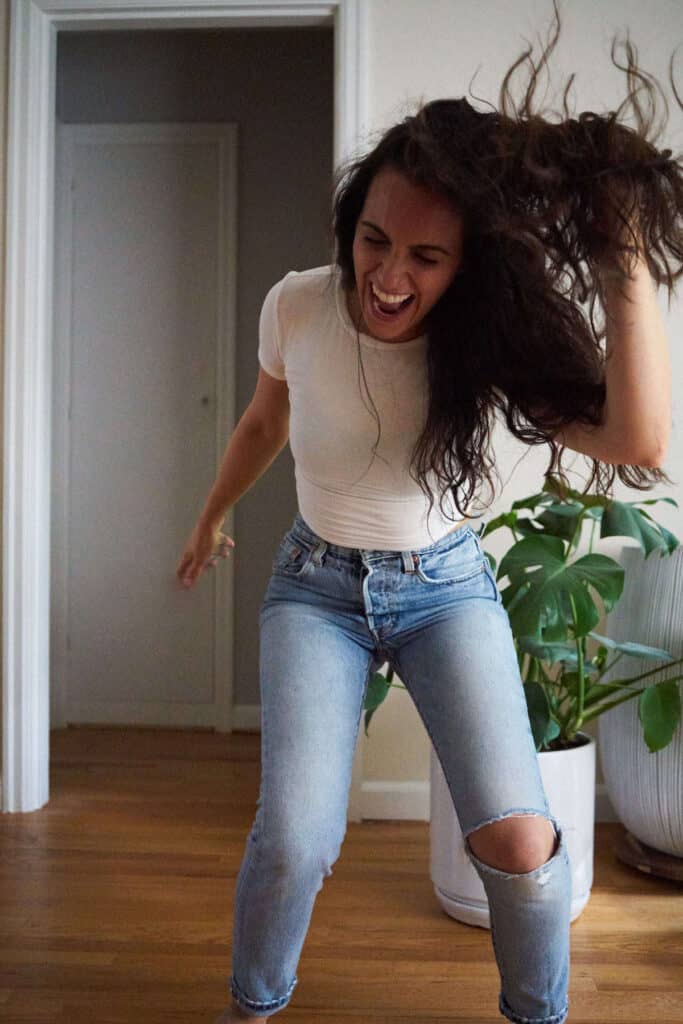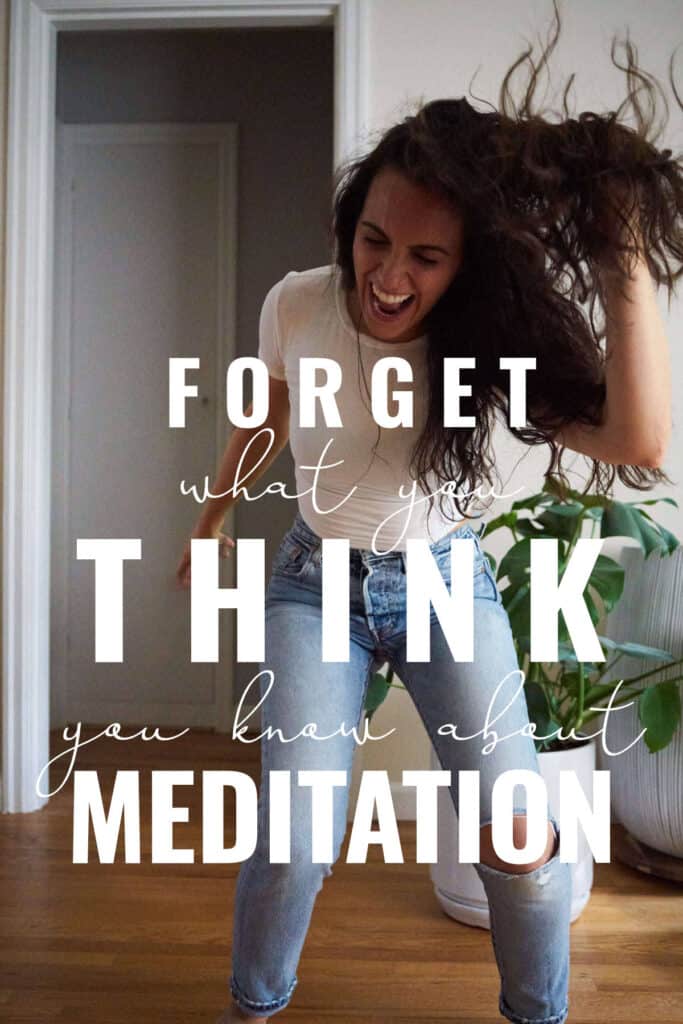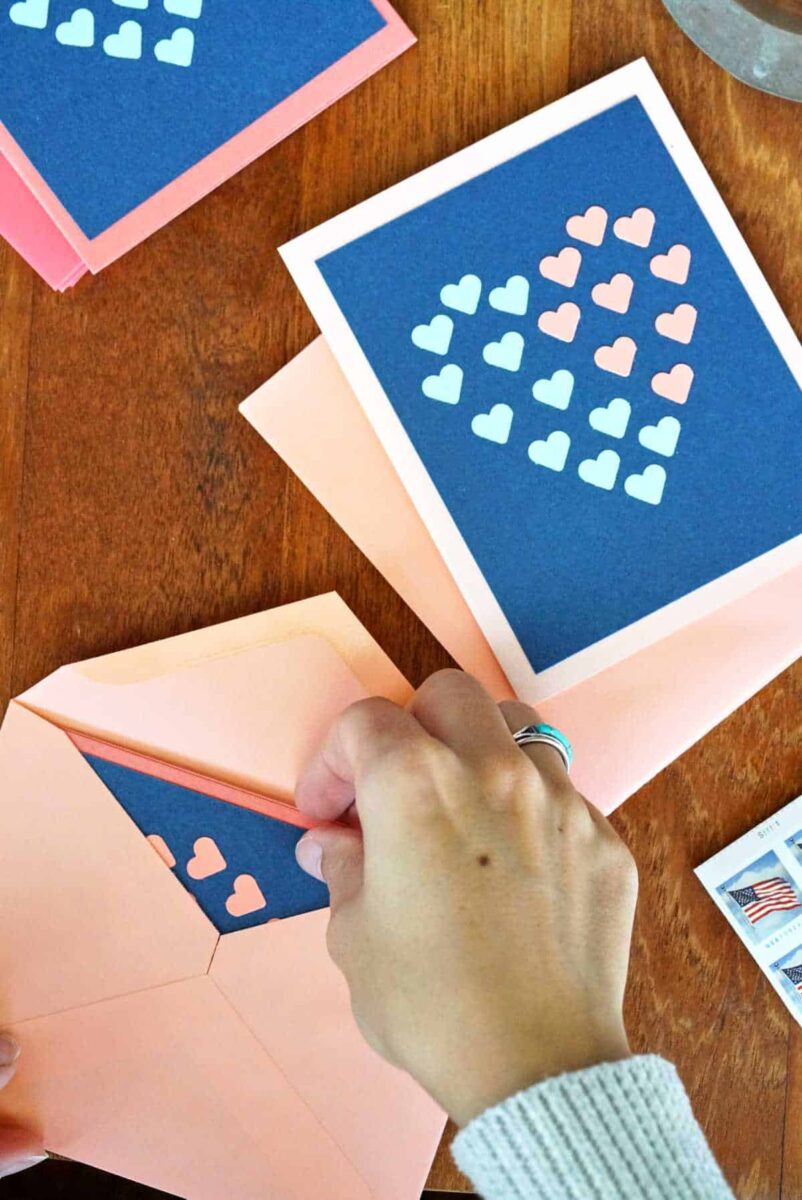Meditation might make you immediately think of sitting cross-legged, eyes closed, and silent. But this is only one image of meditation – It can be so much more than that! Anyone can, if open and willing, introduce small meditative practices into their life, and I want to help you explore ways to do that. With some unexpected methods and as little as 3-5 minutes of your day, you can start to feel an impact.

You might be reading this article for different reasons. Maybe you’re looking for a way to manage stress. Maybe you want to sleep better or feel more alert in the morning. Maybe it’s that someone has told you that you should be meditating, and you’re looking to find out more. Whichever it is, I first encourage you to really expand your interpretation of what meditation is and can be. Here’s how I like to think of it.
Meditation is the process that allows us to disconnect from distractions. And there are several ways that process can happen. It happens when you devote time in your day to engage in an activity that consciously removes distractions. For me, those moments free from distraction allow me to feel grounded and ultimately allow me to influence the tone of my day. Even if it’s just for five minutes.
- Walking down the street with no headphones on, noticing the people and places that you pass.
- Two minutes with Beyoncé playing full blast, dancing your heart out like no one is watching.
- A no-technology morning where you give yourself over to the ritual of making breakfast.
Do any of these count as meditative practices? Absolutely! They’re all moments that you create where you give yourself time to check-in with your mind and your body. You allow yourself time to let out emotion, or take a break from emotion. It’s time where you can actively reframe your mood.
Are you skeptical that 5 minutes of making tea in the morning before looking at your phone can be a meditation? Give it a try for a few days and see how it feels for you. It’s powerful to shut off the external inputs in life and look inward for a moment. It allows you to feel grounded and present, rather than just rushing through your day.
There’s No One Way to Meditate
Meditation is usually marketed to us the same way. You clear your mind and focus. You need a teacher, or classes, or other tools to be a success at it. I don’t think you need to meet any of these ‘requirements’ to meditate. It’s certainly one path to meditation, and I always advocate learning from those with experience and expertise. But you can also start small, with just you, and create a meditation that fits in your day. Three minutes, ten minutes, whatever you have, is a great place to start. And it takes ongoing learning – you may not find a method that resonates with you right away. And that’s okay!
I want to reassure anyone trying meditation that there is no right or wrong way to do it.
Sometimes one method will resonate for you, and then after a while you aren’t feeling like it’s working anymore and you need to try something new. It’s about experimenting with different methods so you can expand your knowledge of what works for you. Then, in the moment when you need it, you can call upon the right method.
Anything can be a mindfulness practice. Whatever the activity is that allows you to disconnect from distractions – it all counts as meditation. Here are some methods that I’ve found really impactful, but I encourage you to experiment with different practices and find what works for you.
Mindful Walking
Mindfulness means to be fully conscious or aware. You can turn any activity into a mindful activity, like gardening, cooking, making tea, and more.
Mindful walking is one physical activity that works to achieve this state and is a concept I learned while visiting a monastery. Usually, when we’re walking somewhere, we’re focused on the destination. We might be in a rush, or talking on the phone, or listening to music. In other words, we’re really distracted!
Take a short walk where you have no distractions, and really focus on your surroundings: The way you step and the way you interact with the environment should be dedicated to really noticing the world around you. Take the time to notice:
- The way the ground feels beneath your feet
- The noises around you
- The scents you can detect
- The weather on your skin: is it hot? Cold? Windy?
- The plants, the flowers, the greenery you see
- The people that you pass by
Open up to all your senses and focus on noticing everything that you can. This can be done anywhere, and take as much or as little time as you have.
Dedicated Morning Moment
This may sound familiar – you wake up, look at your phone, bundle yourself into the shower, dress, eat quickly, then head out the door.
Instead, imagine your morning routine is the first important activity of the day, not just something to get through. It’s something to enjoy! I can’t speak for everyone, but when I slow down and really focus on making my morning tea (like a 2-ingredient matcha) and then having five minutes to drink it, just me and my thoughts, my whole day is different. Even just waiting this extra five minutes before I get absorbed in my phone notifications transforms my day.
We all have a routine – start by isolating one part of your routine and dedicating all your focus to it. A long, mindful shower. A mindful breakfast. Mindful dressing for the day. Give yourself over to the activity and perform it with positive intention. Let yourself have that time to adjust to the day before a call, or a meeting, or an errand distracts you.
Five Minutes for Yourself
Meditation doesn’t have to take hours of time commitment – you can start with as little as five minutes out of your day. Is there a time when you have a lull in your day? Instead of filling that moment with a distraction like people, technology, or other perceived obligations, remove yourself and stop what you are doing for a 5-minute pause. Make an effort to use those five minutes to just be with nothing, and observe how it makes a change in your day to take that break.
Dancing Meditation
Our bodies feel good when they move – and I don’t mean exercise necessarily. Walking, stretching, dancing all take us away from the fatigue we feel from being sedentary. That’s where dynamic or dancing meditation can be really effective.
A practice that I like to do at home is play my favorite, upbeat song full blast, and dance to it like no one’s watching! It’s a great way to release energy and tension from the body. Fully dancing your heart out, (and singing along too if you want!), encourages you to embrace moving inhibited by distraction. Give yourself the freedom to let go complete! When we move, it’s usually with an eye to how people see us. We are conscious of people watching us, of the way we hold our bodies. We truly move differently when no one is watching. When you let that self-consciousness go and just move, it’s incredible.
If you’re interested in exploring traditional dynamic meditation, a guided class is a great place to start. A teacher will take you through a session where music and meditation are combined with body movements like shaking or jumping.
Chanting or Singing Meditation
Sound is powerful. It influences our mood without us even knowing it. To replicate the experience of group chanting at home, I love to put on music and sing my favorite song at the top of my voice. Don’t be afraid to get loud and turn the music up! You can feel the power of your own voice and sound – let it completely take over. It’s extremely freeing!
If you’d like to try chanting by yourself, you can choose a word, or an affirmation, to say while focusing your mind on it for a period of time. This has different effects when you say it out loud or in your head, and I would encourage you to try both, to see if one or the other feels better for you.
Chanting meditation is traditionally a Buddhist practice, usually done in a room where there are lots of people. The chanting or singing focuses on a word or sound, the most well known probably being the ‘Om’ sound. Chanting meditation in groups, like Kirtan, can also be powerful when practiced alone.
The Take-Away
Meditation doesn’t have to feel unattainable. It’s always within your reach to bring small meditative practices into your day-to-day life. You can always try new methods that may seem unconventional, as long as they resonate with you. It is about you and your needs, not what someone else is telling you to do.
It also doesn’t have to be a time absorbing practice – as little as five minutes really can make a huge difference. I hope you choose to take a few spare moments and inspiration from this article to create a unique practice that works for you. I look forward to hearing about the ways in which you meditate!
Resources to learn more…
Here are links to learn more about some of the meditation methods discussed in this article. Links open in a new tab.
Read More
Candice is a certified yoga instructor who has practiced meditation and mindfulness all over the world, from Bali to India to California. Read more about Candice here.







